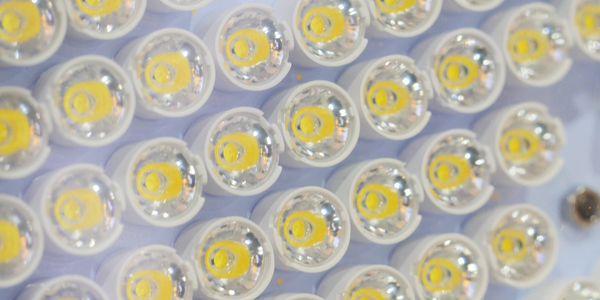Customer Company Size
Large Corporate
Region
- Europe
Country
- France
Product
- ICONICS GENESIS64™ HMI/SCADA suite
- Hyper Historian™
- AnalytiX® suite
- WebHMI™
- ReportWorX™
- BridgeWorX™
Tech Stack
- OPC
- SQL Server
- Oracle database
Implementation Scale
- Enterprise-wide Deployment
Impact Metrics
- Cost Savings
- Energy Saving
- Productivity Improvements
Technology Category
- Analytics & Modeling - Real Time Analytics
- Platform as a Service (PaaS) - Data Management Platforms
Applicable Industries
- Consumer Goods
Applicable Functions
- Discrete Manufacturing
- Quality Assurance
Use Cases
- Energy Management System
- Real-Time Location System (RTLS)
- Predictive Maintenance
Services
- System Integration
- Software Design & Engineering Services
About The Customer
Tefal SAS, headquartered in Rumilly, France is a subsidiary of Groupe SEB, a “world leader in Small Household Equipment”. Groupe SEB, which estimates it sells six products across the globe per second (adding up to 200 million products sold every year throughout 150 countries), has approximately 25,000 employees spread through 29 manufacturing sites worldwide. Tefal’s Rumilly location employs approximately 1,850 people within 160,000 square feet of building space, with an additional 160 employees in Tournus, France within 21,000 square feet. Every year, Tefal manufactures around 44 million products in what was a high energy-consuming process. The manufacturing process entails many phases, including cooking, drying and cooling.
The Challenge
Tefal SAS, a subsidiary of Groupe SEB, is a global leader in small household equipment. The company manufactures around 44 million products annually in a high energy-consuming process. The energy costs for manufacturing operations could reach as high as eight million euros, split between four million for electricity costs and four million for gas. Given these numbers, Tefal decided to launch an Energy Efficiency project to reduce manufacturing-related energy costs. The company began the project by making an energy diagnosis, in order to learn real-time consumption levels towards the goal of making improvements leading to energy-related savings. Tefal sought an energy management system that could be implemented without revising their existing architecture. They aimed to connect the new system to equipment already in place, using standard communication protocols such as OPC, for use of real-time data in addition to archiving and recovery.
The Solution
Working directly with ICONICS France, Tefal SAS selected ICONICS GENESIS64™ HMI/SCADA suite; Hyper Historian™ high-speed, robust data historian; AnalytiX® suite of analytical tools (including the Energy AnalytiX advanced energy management software); WebHMI™ Web-based, real-time automation software; ReportWorX™ enterprise reporting, charting and analysis software; and BridgeWorX™ real-time workflow for data bridging. The planned solution needed to interface with multiple pieces of equipment including Allen-Bradley, Eaton Moeller and Schneider Electric PLCs (via OPC), a Socomec power device (also via OPC) and a Producim MES system (via SQL query in an Oracle database). It also needed to be easy to use, to provide access via Web clients without installation, and to manage different needs including monitoring, reporting, commanding, GEO SCADA/mapping, alarm management and trend management. Tefal’s selected solution would also need to integrate with existing Microsoft components (SQL Server, Excel, etc.), manage consumption of electricity, gas and water (including a way to easily add meters), and provide energy cost management capabilities.
Operational Impact
Quantitative Benefit

Case Study missing?
Start adding your own!
Register with your work email and create a new case study profile for your business.
Related Case Studies.
.png)
Case Study
Improving Vending Machine Profitability with the Internet of Things (IoT)
The vending industry is undergoing a sea change, taking advantage of new technologies to go beyond just delivering snacks to creating a new retail location. Intelligent vending machines can be found in many public locations as well as company facilities, selling different types of goods and services, including even computer accessories, gold bars, tickets, and office supplies. With increasing sophistication, they may also provide time- and location-based data pertaining to sales, inventory, and customer preferences. But at the end of the day, vending machine operators know greater profitability is driven by higher sales and lower operating costs.

Case Study
Series Production with Lot-size-1 Flexibility
Nobilia manufactures customized fitted kitchens with a lot size of 1. They require maximum transparency of tracking design data and individual processing steps so that they can locate a particular piece of kitchen furniture in the sequence of processes.

Case Study
American Eagle Achieves LEED with GE LED Lighting Fixtures
American Eagle Outfitters (AEO) was in the process of building a new distribution center. The AEO facility management team decided to look at alternate options for lighting layout that could provide energy and maintenance savings. AEO would need a full-time maintenance employee just to replace burned-out fluorescent tubes.

Case Study
Revolutionizing Rodent Control
From pet- and child-safe traps, to touch-free and live-catch rodent control solutions, Victor continues to stay committed to producing superior products that meet the varying needs of today’s pest control professionals. And, with a long standing history supporting customers in the food processing, service, and retail settings, Victor knew that strict regulations were costing organizations thousands of dollars in excess overhead trying to manage their rodent-control solutions. Trap inspections in these environments are often difficult and time consuming, requiring personnel to manually check a trap’s status multiple times per day, amounting to over six hours of manual labor. Victor is looking for an innovative way to increase operational efficiencies with the use of technology.








